Class 5: Homing Endonucleases, Introns and Inteins¶
Homing Endonucleases¶
Homing Endonucleases are selfish DNAs that spread to homologous sites in other phages¶
<TODO>
HNH Structure¶
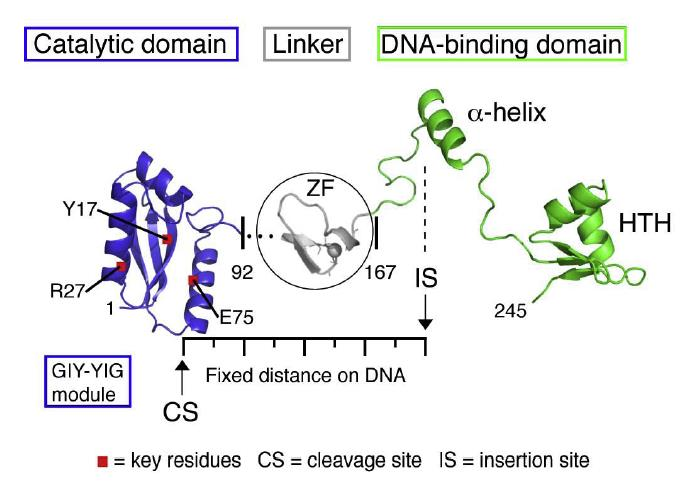
Sturcture of HNH sequence
T4¶
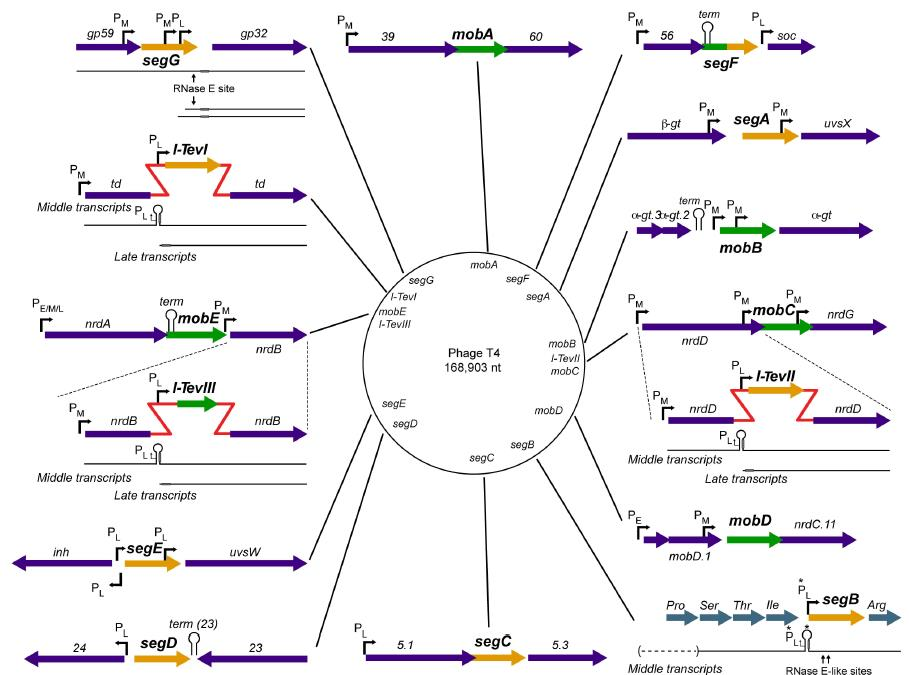
T4 has 15 homing endonucleases
Homing Endonucleases in T4¶
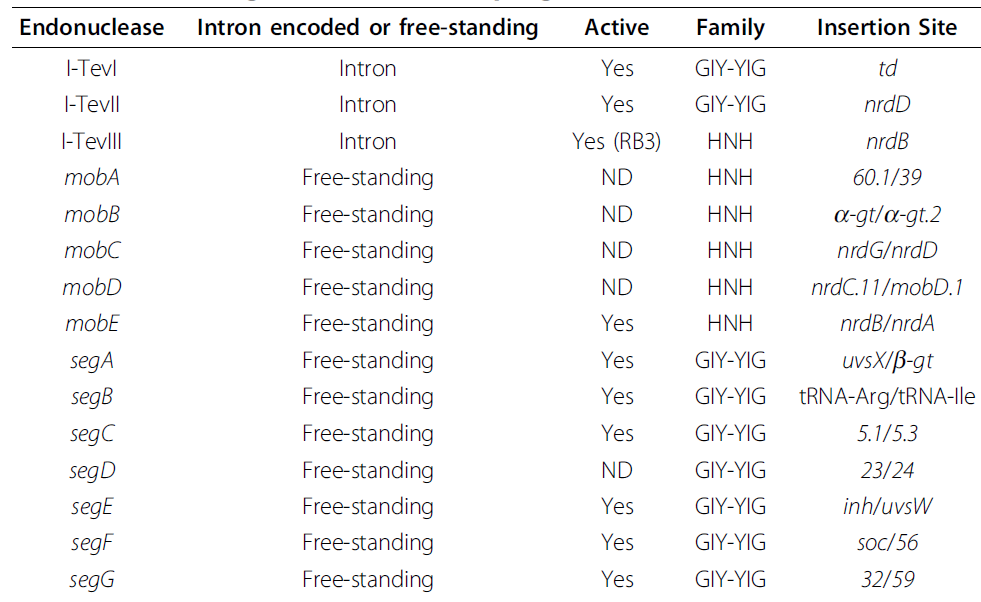
HNHs in T4
Introns¶
Introns¶
- An intron is an extra section of DNA that interrupts the protein-coding sequence of a gene
- This sequence has ribozyme activity and splices itself out of the mRNA, leaving an intact message and a free intron RNA
- Introns often (but not always) contain a homing endonuclease gene
- Don’t confuse the activity of the homing endonuclease with the self-splicing ribozyme activity...these are two different things!
- Introns are often found in essential genes, and often in genes involved
in DNA metabolism
- Why?
Introns are Self-Splicing Elements¶
<TODO>
HNH gene in Group I Self-Splicing Introns in T4¶
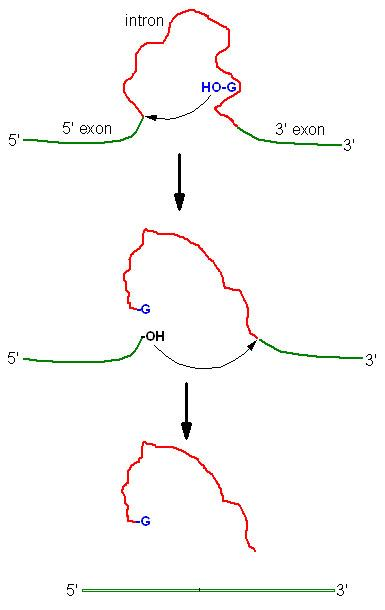
The process in a ribozyme mediated splicing event. The result is that the HNH RNA sequence is removed (not used for translation), and the surrounding gene mRNA is generated with the correct reading frame.
Secondary Structure at RBS in HNH Genes¶
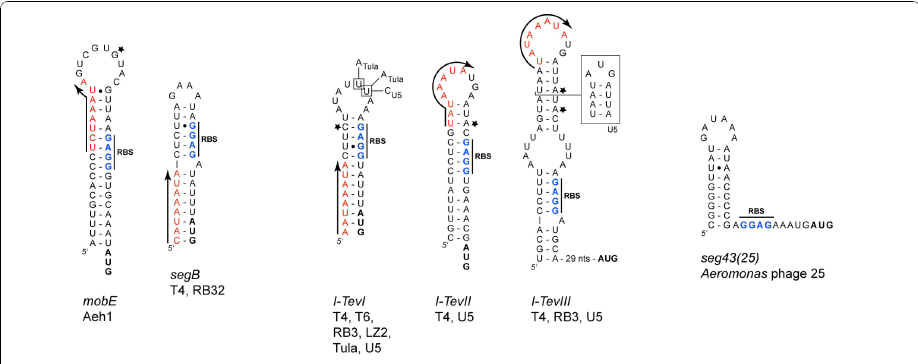
Reduces translation to very low levels
Endonuclease & Repression¶
In the HNH introns, the endonuclease also acts as its own repressor.

The endonuclease cleaves the homing site (HS) in the target DNA. The endonuclease represses by binding the operator site (OS) in donor DNA.
Inteins¶
Inteins¶
- Like introns, inteins are an extra DNA segment that interrupts a protein-coding gene
- Unlike introns, the extra DNA is in-frame with the rest of the protein and is transcribed and translated with it
- Autocatalytically excises itself from the translated protein to produce a mature peptide and free intein peptide
- Again, usually in important genes, and in genes involved in DNA metabolism
Inteins Self-Excise From Translated Proteins¶
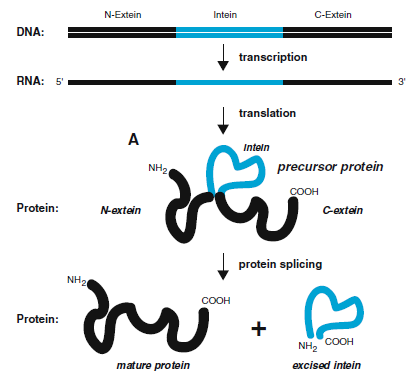
Inteins Self-Excise From Translated Proteins¶
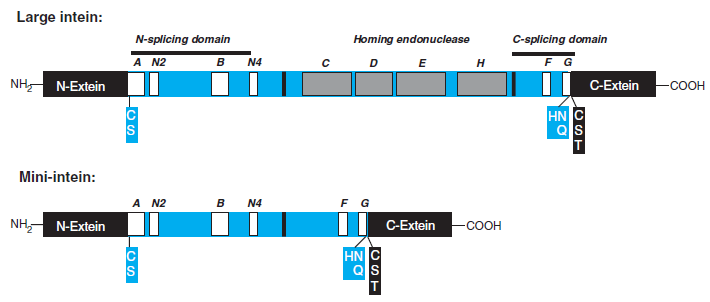
Intein sequences may contain a homing endonuclease domain (or not). Because it must catalytically excise itself from the protein, the ends of the intein sequence are partially conserved
Intein Boundaries are Partially Conserved¶

What Does An Intron Look Like in a Genome?¶
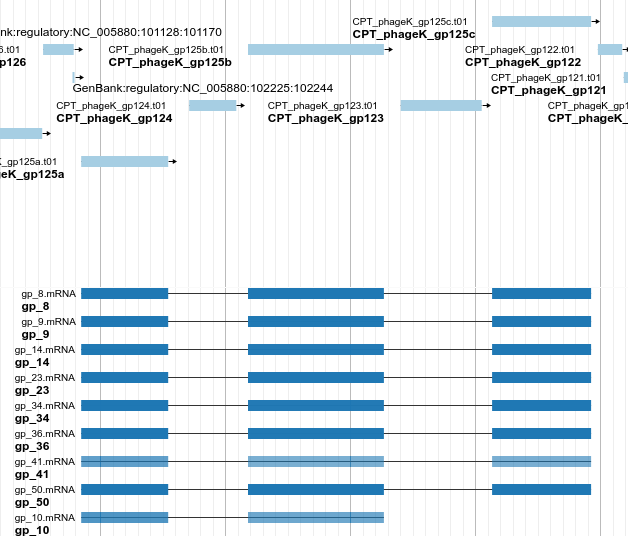
- Phage K gene 125a/b/c is the phage DNA polymerase and contains two introns
- The second intron contains an HNH endonuclease (gp123), but the first intron has a gene of unknown function (gp124)
- The introns are not obvious just from looking at the sequence, but a BLAST search would show gp125a, gp125b, and gp125c all hitting different portions of a similar DNA pol without these introns, if one exists in the database
Intron Detection¶

Given how non-obvious this result is, we have developed a tool which will help automatically discover these introns. The tool identifies CDSs which blast to the same protein in different regions.
What do Inteins Look Like?¶

- The phiCbK large terminase gp318 contains a 341 aa intein (red)
- The full protein is translated (blue CDS), but the intein is later excised to join the two halves of the mature peptide (green)
- Again, a BLAST search will show the insertion of an intein if there is a closely-related intein-less close relative of this protein in the database
